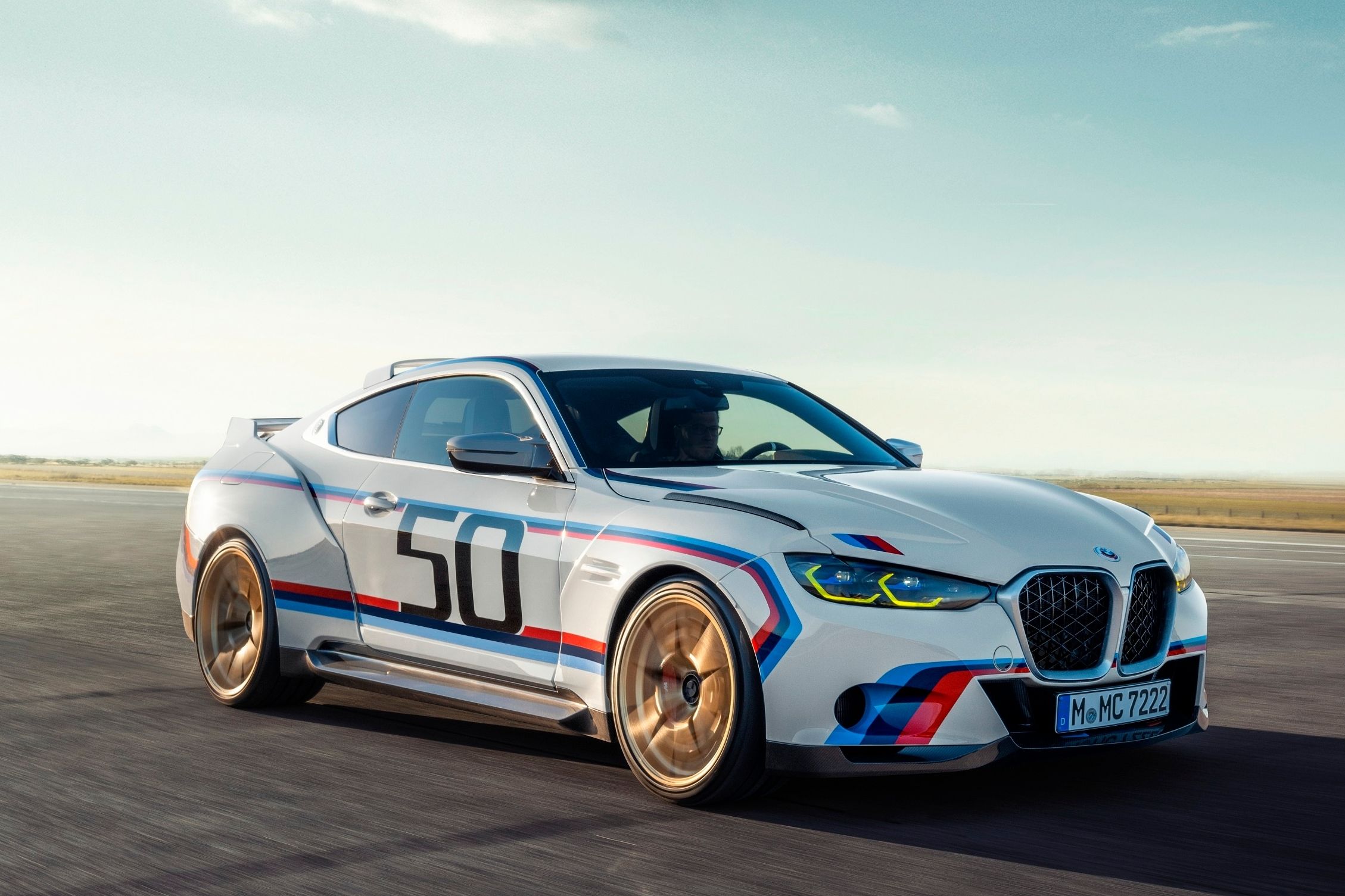
BMW has shared some of the painstaking assembly and hand-painting processes that go into creating the 3.0 CSL, and when you hear more about what it takes to get to the finished product, you can (almost) understand why this coupe costs an astonishing $780,000.
Limited to just 50 examples, the BMW 3.0 CSL may be based on the production body of the M4 CSL, but a dedicated work area and custom paint shop are needed to craft this special car. The two locations responsible for bringing the 3.0 CSL to life include a dedicated work area of the Dingolfing body shop, and highly technical paintwork expertise from BMW Group Plant Landshut.
We'll start at the BMW Group Plant Dingolfing in Lower Bavaria, where exclusive models like the M8 Gran Coupe and M5 are also built.
The 3.0 CSL is wider than the M4 CSL, and one of the first processes is the widening of the 3.0's arches with a unique beading and welding process. We'll get into the intricacies of how the body is painted lower down, but at Dingolfing, a team of 30 experts assemble the body in stages. To assemble one complete vehicle, the process plays out over nearly two weeks, and there are eight major assembly cycles. Yes, Bugatti took literal years to complete production of the Chiron, but for BMW, this slow rate of production is rare.
Onsite modifications of the axles take place to ensure they work with the center lock from motor racing. Mounted parts, many of them in CFRP, such as the side panels and hood, are fixed upstream. Nearer to the end of the process, the rear section and other parts are separately assembled.
Individual workshops are responsible for crafting the various interior elements, and these are based in Garching and Dingolfing.
Standardized testing then takes place, both on rolling test benches and brake dynamometers, before another final inspection process and a drive program at the plant's dedicated test track. Only after all this is done will the 3.0 CSL be ready for its lucky owner to take delivery.
"We are proud to be entrusted with building such an iconic car," said Dingolfing Plant Director, Christoph Schroder. "It underlines the wide range of models and technologies we have here on-site. In addition to highly automated large-scale production, we also excel at hand-crafting cars."
But perhaps the most fascinating part of the assembly process is the effort it takes to get the paint just right. The Landshut plant was the natural choice for the 3.0 CSL's paint job; each work day, over 1,200 painted plastic outer panel sections comprising 40 standard and 200 custom colors exit this site. Annually, that works out to 273,000 components.
The CRFP hood and roof are created in a craft-scale process, but the car's visual flair is largely as a result of the iconic M livery stripes in blue, dark blue, and red. These stand out even more since Alpine White is the solid base color.
But because the colored stripes carefully follow the curvature of various body panels, they created the biggest challenge for the team, even more so than the expensive two-tone paint of the new BMW 7 Series where the separation between the colors is more defined between the top and bottom halves of that car's body.
"The transitions between the M stripes, from one component to the next, had to be absolutely perfect," said Project Manager Dr Christian Koch. "For example, the stripes on the side panel have to be at exactly the same height as on the door to make sure the optics are aligned. That takes a lot of painting know-how, individual experience, and flair."
Whereas liveries on many other special edition cars are applied using film, the stripes on the 3.0 CSL are painted. The livery design itself is projected onto relevant body panels with a laser projector to ensure precision with other panels, but the process of masking the lines between uniquely colored surfaces is done manually. Eight customized contour films and seven paint layers are required - for every component.
The other prominent part that separates the 3.0 CSL from other BMWs is its unique rear spoiler. This spoiler is embellished with the "M Power" badge. Together with the "50" on the roof, these details are also masked by hand. They differ from the livery stripes in that layers of paint are not exposed, but the visible carbon fiber is revealed instead.
This drawn-out, hand-crafted production process has helped to create a car that is distinct from the M4 CSL upon which it is based, but it adds tremendously to its high price. If you think $780,000 is a lot, though, it seems some examples of the 3.0 CSL could be auctioned off for even more than that. For the rest of us, we can only dream about owning an exotic of this stature.
